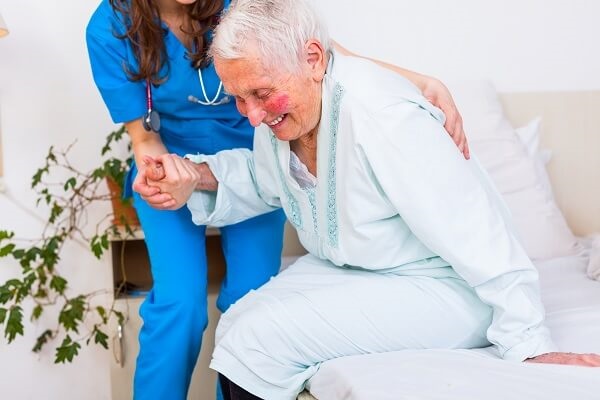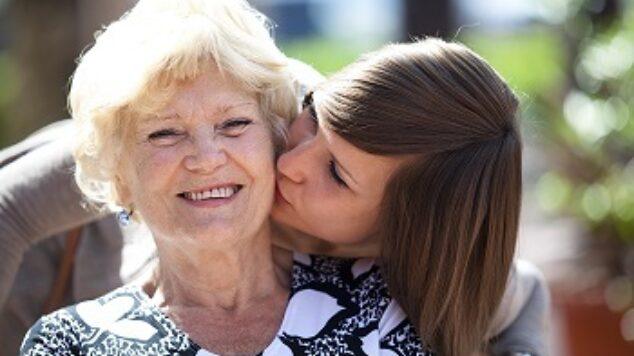 It’s not uncommon for seniors to experience limited mobility, often in the form of difficulty sitting and standing, as they get older. Because these mobility issues are common, many seniors also write them (and the discomfort that comes with them) off as a normal part of the aging process.
It’s not uncommon for seniors to experience limited mobility, often in the form of difficulty sitting and standing, as they get older. Because these mobility issues are common, many seniors also write them (and the discomfort that comes with them) off as a normal part of the aging process.
It’s certainly not normal for anyone to be in pain while performing daily activities. If you have a loved one who struggles with sitting and standing independently, the following tools can help minimize their discomfort and improve their quality of life.
1. Lifting Cushion
One of the reasons many seniors struggle with sitting and standing is the fact that they lack lower body strength and mobility. This makes lowering themselves to a chair and rising up from it challenging.
A lifting cushion takes away some of this difficulty by raising the height of the chair and reducing the amount that seniors need to bend their knees when sitting. Many lifting cushions also help give seniors a bit of a boost when they need to stand -- some are even electric to make getting a standing position even easier.
2. Grab Bar
Grab bars are another convenient aid that seniors can use to help them stand up from a chair or sofa more easily. If drilling into a wall to install a grab bar doesn’t appeal to you, consider investing a security pole that has a grab bar attached. This tool can easily be placed next to a favorite chair or sofa so that seniors can grab onto it for support when standing.
Many seniors also benefit from using a portable grab bar that attaches to the outside of their car. This can help them get in and out of the car more easily.
3. Swivel Cushion
Twisting while sitting or standing up can cause a lot of pain and discomfort for seniors. A swivel cushion takes away the need to twist while standing up from a chair. These cushions are especially helpful when getting out of a car seat. They’re portable and easy to move from car-to-car, so there’s no reason not to have one on hand.
4. Rollator Walker
A rollator walker can also serve as an assistive piece of mobility support equipment. As long as it’s in a locked position so it doesn’t accidentally roll away, many seniors can benefit from using their rollator walker as an aid to help them stand and sit more easily.
5. Bed Trapeze
Getting out of bed can also be a challenge for older adults, especially getting from a lying position to a sitting position. A bed trapeze can help make this process easier by giving seniors a stable handle to hold onto and use to pull themselves up.
Trapezes facilitate strength training for seniors experiencing muscle loss, but they’re also a good option for people with nerve diseases like Parkinson’s disease, stroke victims, and arthritis sufferers.
The Best Exercise to Help Seniors with Sitting and Standing
While these tools help seniors with sitting and standing, it’s also important for seniors to work on improving their ability to sit and stand without the help of any aids. In fact, their life, in a sense, depends on it.
Sitting and standing difficulties have actually been shown to correlate with life expectancy. The more difficulty someone has sitting down and standing up from that position, the shorter their lifespan is likely to be.
For seniors who want to lengthen their lifespan and improve their quality of life, learning to sit and stand on their own again is an important step. The following exercise is a great one to help seniors improve their sitting and standing abilities.
Sit-to-Stand Exercise
Start by finding a sturdy chair that doesn’t slide when you sit down on or stand up from it.
Once you’ve got your chair, take a sit with your hips on the edge of the chair. Pull your feet back so that your toes are underneath your knees. Then, slowly stand up from the chair. Use your arms to push off the sides of the chair or your knees if necessary.
Once you’ve stood, sit back down. Bend your knees and push the hips back as you lower yourself into a seated position.
Rest as long as you need before repeating this exercise again.
Depending on your confidence in your mobility, it may be best to only do this exercise when a loved one is nearby and can offer extra support should you lose your balance. Remember, safety first.
When sitting and standing from a chair gets easier, you can challenge yourself by crossing your arms in front of you, placing a flat pillow under the feet, or holding a lightweight in front of you.


Comments